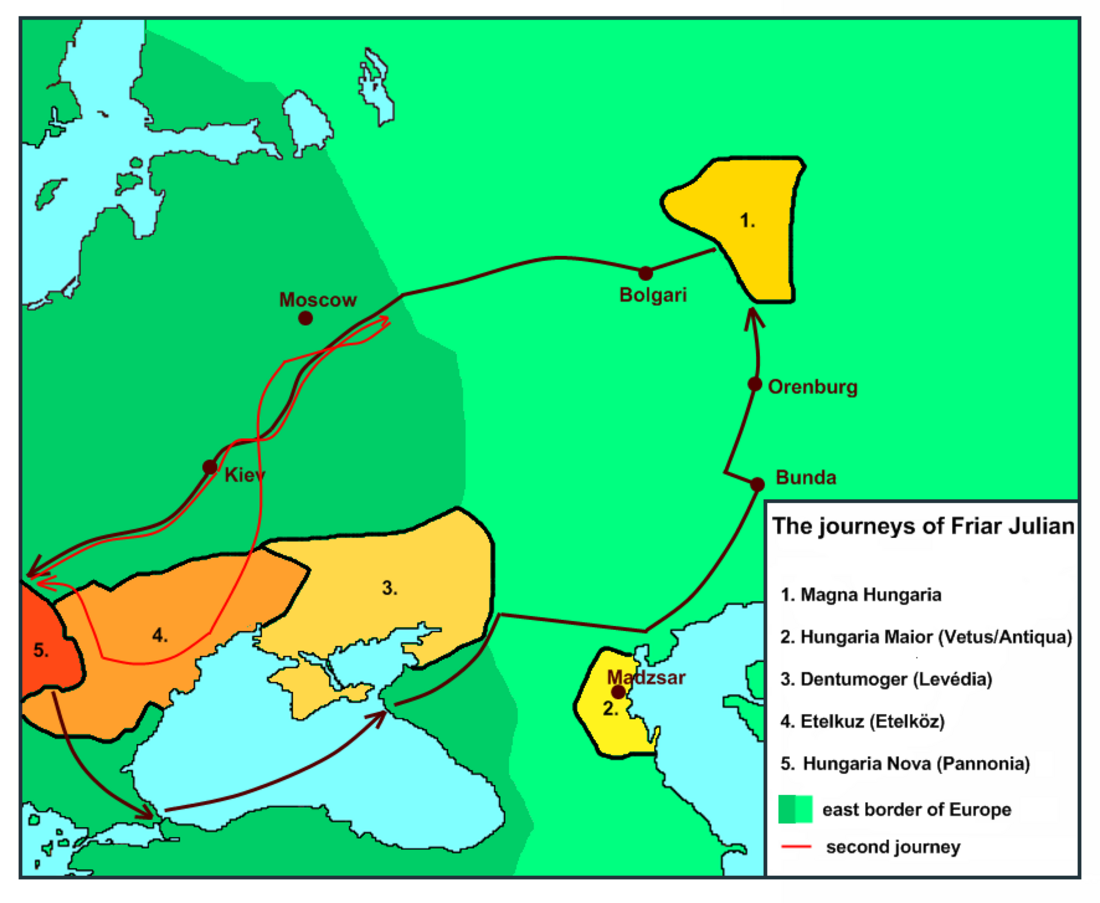Top Qs
Timeline
Chat
Perspective
Eastern Hungarians
Ethnic group From Wikipedia, the free encyclopedia
Remove ads
The term Eastern Hungarians (Hungarian: Keleti magyarok; also called Eastern Magyars) is used in scholarship to refer to peoples related to the Proto-Hungarians, that is, theoretically parts of the ancient community that remained in the vicinity of Western Siberia, the Ural Mountains, Kazakhstan or the North Caucasus, and as such did not participate in the Hungarian conquest of the Carpathian Basin.

Remove ads
The possible locations of the remnants of Hungarians
Summarize
Perspective
Madjars
The Madjars , a Turkic ethnic group in Kazakhstan are believed by some to be Eastern Hungarians, with genetic analysis placing them closer to the Hungarian population than to their geographic neighbours.[1]
Yugra
Yugra (Greek: Οὔγγροι) has been believed by some to have been the Hungarian Urheimat (homeland), which is today inhabited by the Mansi and Khanty, two related ethnic groups.[2][3]
Magna Hungaria
The term "Eastern Hungarians" is also used in relation to the Magna Hungaria of Friar Julian (fl. 1235), located at Bashkortostan (the land of the Bashkirs).[4][5] where Julian was able to communicate with the locals in his Hungarian language.[6]
Savard Hungarians
According to Hungarian scholarship, there was a group of "Savard Hungarians" that broke off and moved across the Caucasus into Persian territory in the 8th century.[7][8]
Theory of Kummagyaria
There is also the theory of "Kummagyaria" (Latin: Cummageria),[9] in which a group that stayed behind possessed a country north of the Caucasus. According to László Bendefy, the approximate location of Kummagyaria is the riparian area of the Kuma River, Southern Russia. Odorico Raynaldi (1595–1671) mentioned Papal relations with Jeretany (Hungarian: Gyeretyán), called the ruler of Hungarians, Malkaites and Alans, in the 1320s.[10][11] Earlier, Polish diplomat Andrzej Taranowski (1569) had mentioned the latter information.[12] In 1712, the French traveller Aubrey de la Motraye passed through the area. His notes state that from what he heard from the local Tatar population, he maintained that the city of Mazsar was formerly inhabited by Magyars.[13]
Remove ads
See also
References
Sources
Wikiwand - on
Seamless Wikipedia browsing. On steroids.
Remove ads
